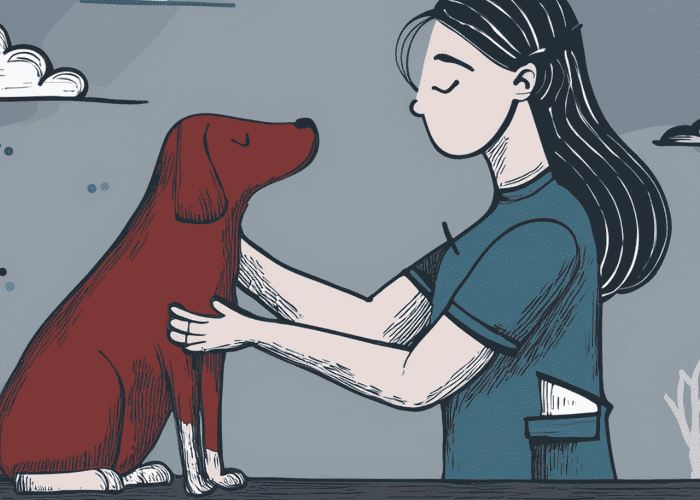

10 Ways Veterinary Technology Can Upgrade Your Preventive Care Program
Robust client buy-in and engagement in your team's preventive care recommendations can mean healthier, longer-living pets with fewer emergencies and more easily managed chronic diseases. However, converting clients into wellness care believers is a time- and energy-consuming process. Leveraging technology can reduce the demands on your team and create a win-win situation for clients and veterinary teams.
Although use of technology in veterinary medicine is useful throughout your practice, predictable, repetitive tasks, such as preventive care recommendations or normal test result reports lend themselves particularly well to automation and digital pet owner communication. Here are 10 ways you can use technology to upgrade your preventive care program and lessen your team's burden.
1. Standardized Wellness Panels
Veterinarians can choose from a vast array of reference lab wellness tests, but standardizing this across the practice can take the guesswork out of your recommendations. Customizing and bundling services according to species and life stage saves clients money, and you can present them with a single line item rather than overwhelming them with multiple test recommendations. You can also offer tiered wellness panels—such as senior wellness, senior wellness plus, and senior wellness with cancer screening—and let clients choose how much they would like to spend, while still covering the minimum recommendations for each life stage.
2. Digital Pre-Visit Questionnaires
Sending clients a digital questionnaire that automatically loads into the visit notes upon check-in can speed up history taking. A team member can review the answers to basic questions and formulate more targeted questions rather than starting from scratch, which saves time and ensures important questions aren't glossed over. Choose your questions wisely, because busy clients may give up on a lengthy form.
3. Digital Lab Result Communications
Email and text communication tools that integrate with your PIMS—or are already built-in—allow you to easily send normal test results in seconds. Many wellness test results are normal, and electronic communication provides clients with documentation of the results and saves your technicians valuable time. The time and energy that a phone call requires is then reserved for those pets and clients who need more personalized attention.
4. Client Surveys
Automated and anonymous client surveys sent after wellness visits provide valuable feedback without putting clients on the spot. Clients may reveal things on a survey they would feel uncomfortable bringing up in person, such as feeling oversold, rushed, or confused about recommendations. Reviewing your clients' feedback helps you refine your wellness programs and exam room discussions, achieve better compliance, and improve the overall client experience.
5. Automated Reminders
Automated text and email reminders save your client service representatives precious phone time and are generally more effective than calls. You can set your PIMS or integrated communications app to send multiple reminders as preventive care services come due, and additional reminders after the client schedules their visit. Instead of throwing away the postcard and forgetting about a necessary vaccine or test, clients will see the email or text each time they open their message folders and are more likely to schedule a visit.

6. Data Analytics
Services that pull your PIMS data can analyze financial trends and pet health data, which allows you to see where you need to spend more time and energy. For example, if you find that tick-related disease has gone up in the past year, your team can shift their focus from vaccines to tick prevention and education.
7. Online Scheduling Tools
Many veterinary clients struggle to find downtime to schedule their pet's visit by phone, knowing they'll need to spend several minutes finding a convenient appointment time. Online scheduling tools can reduce call volume to the practice, and clients can visualize the schedule and book an appointment in seconds. Easier appointment scheduling leads to increased wellness visits.
8. Pet Information Portals
Pet health information portals allow clients to see when their pet's services are due without having to call the practice and take up their time, or a team member's time. Informed clients who have a better handle on their pet's care needs can proactively schedule visits rather than waiting for a reminder.
9. Online Pharmacy
Online pharmacies are one of the greatest innovations in veterinary technology in recent years because clients have the option to purchase products from a trusted source at comparable retail prices and ensure revenue sharing with the practice. These services are a win-win-win, and provide clients with the convenience that makes them more likely to comply with flea, tick, and heartworm preventive recommendations.
10. Social Media Marketing
Social media marketing strategies can help you spread the word about your wellness programs. Posts detailing recommendations for each age group and profiling real-life examples of preventive care, such as successful disease management from early detection, will prompt clients to schedule their pet's next visit.
Practices that embrace technology can make their wellness programs run smoothly and efficiently without placing undue burdens on already overworked teams. Try a few of these suggestions to upgrade your practice's preventive care programs and increase client compliance.







